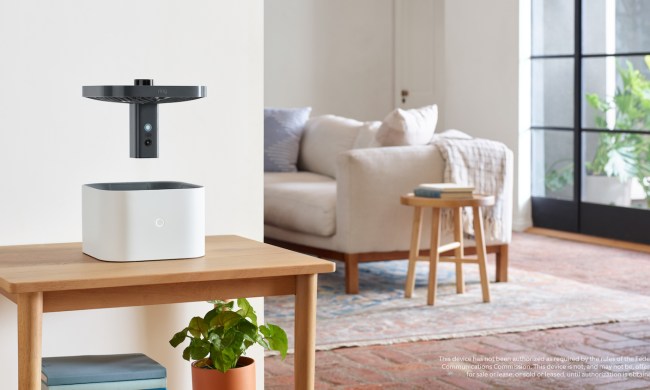Almost every security camera on the market has some form of night vision, but it is often in black-and-white and scarce on details. However, a recent trend among new cameras is the inclusion of color night vision — high-detail, full-color images even in the dead of night.
The Panasonic HomeHawk, Arlo Pro 3, EZVIZ C3X, and others like them have all introduced color night vision that provides better detail beyond the standard black-and-white images of traditional night vision. This is a welcome and much-needed advancement, and more security cameras need to implement this feature. Here’s why.
Color provides more detail
The purpose of a security camera is to monitor for unwanted activity around your home. While there may be some emphasis on the ability to see wildlife and capture moments that might otherwise be relegated only to memory, a security camera is ultimately a tool.

Even in dark conditions, cameras with color night vision add more detail to scenes. Whether a break-in happens or not, you are likely to report an intruder to the police. With a standard security camera, you may be able to distinguish a detail or two, especially if there are outside lights — but with color night vision, you can provide details down to the accents on the intruder’s shirt.

Did the person have an odd hair color? Color night vision could tell you that, too. Knowing details like the color of the shirt the person wore, the color of the vehicle they drove, and more can help you provide important information to the police. From a practical standpoint, color night vision is a no-brainer that should be included in every security camera on the market.
Fewer false alerts
Just as color can provide more detail to human eyes, it can provide higher levels of contrast to A.I. used in security cameras. This can help reduce the number of false motion alerts the system sends. Something as simple as a bag blowing across the yard might set off a standard camera, but color night vision could help tell the A.I. that the shape matches neither human, vehicle, or animal.
False alerts can set users on edge. No one likes being told their camera picked up motion only to find out it was just a shadow across the lens.
Better picture quality
Color night vision is not easy to produce. Many cameras do this through the use of two lenses, one that captures color information and another that monitors for motion. Onboard software then merges these two images on top of one another, almost like HDR.

Of course, the added expense of another lens makes color night vision something of a premium feature — but it also means that most cameras that include color night vision will also have at least a 1080p resolution.
Limitations
The downside to color night vision is that it is not always possible. Almost all security cameras require some level of ambient light in order to produce a color image. In most cases, this ambient light originates from a streetlight or a security light. Many security cameras will have a built-in spotlight to help provide necessary illumination.
This means that a camera won’t be able to provide a color image in pitch-black conditions. However, cameras can then switch over to the traditional night vision and provide a lower-quality image while continuing to monitor the area.
In some cases, a bright moon on a clear night can be enough ambient light for a color image, but including an onboard spotlight like the Arlo Pro 3 does can provide light when necessary. As an added benefit, onboard spotlights attract attention from neighbors. The last thing a would-be thief wants is to literally be put in the spotlight.
If you want to ensure full color in every image, an easy fix is to have lighting scattered around your home. Not only does this improve security overall, but it will provide the ambient light these cameras need to provide you with a full-color image. If it’s an area where light would be a detriment, consider using a security camera with a built-in spotlight.
Due to the added processing time, the frame rate can be a bit choppier. However, despite a few hiccups, color night vision still provides a high-quality image that allows you to clearly monitor what is happening through the camera.
Worth the higher cost?
It’s likely more companies will implement color night vision into their security cameras going forward, if only to stay competitive with other options on the market. However, the cost of cameras will likely rise at least somewhat to match the additional expense of adding more lenses and processing power to create a color image.
The question is whether or not this increased cost is worthwhile. After all, does color make that much difference? Though the answer may come down to personal preference, the benefits speak for themselves.
The ability to distinguish more details from the camera, provide identifying features to police if necessary, and the reduced rate of false alerts all make color night vision a feature that is better included than not.






